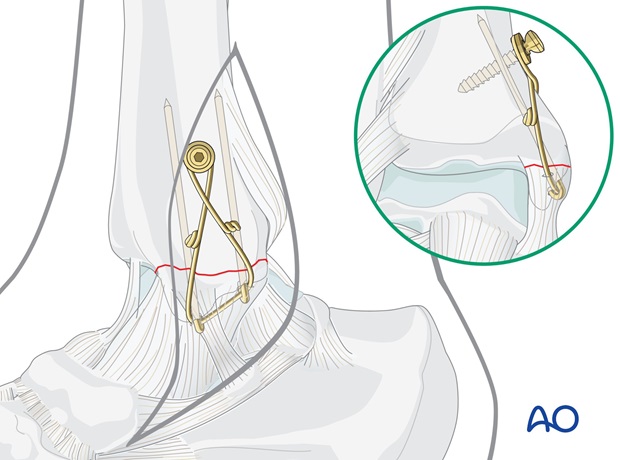Medial, transverse fracture: cerclage compression wiring
Indication for cerclage compression wiring
Cerclage compression wiring is indicated for fixation of small medial fragments, avulsion fractures, or osteoporotic bone.
To be able to use cerclage compression wiring, the opposite cortex needs to have contact and must be able to resist compression.
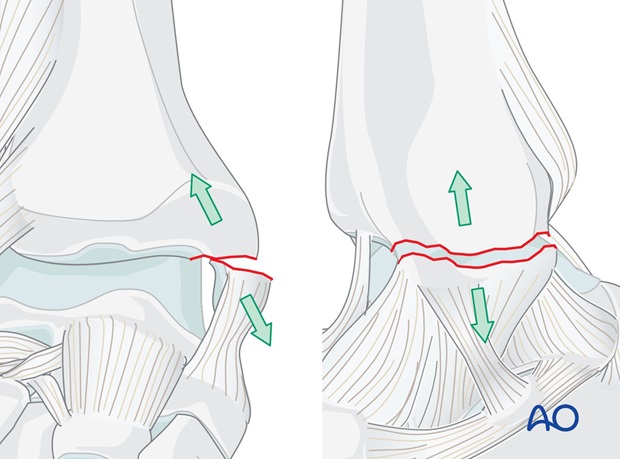
The figure-of-eight wire loop lies on the medial surface of the medial malleolus and acts as an interfragmentary compression device when tightened.
Choose a wire of sufficient strength to withstand the forces generated in the figure-of-eight loop (0.8 - 1.0 mm).
Note: “Cerclage compression wiring” was referred to as “Tension band wiring”. We now prefer the term “Cerclage compression wiring” because the tension band mechanism cannot be applied consistently to each component of the fracture fixation. An explanation of the limits of the Tension band mechanism/principle can be found here.
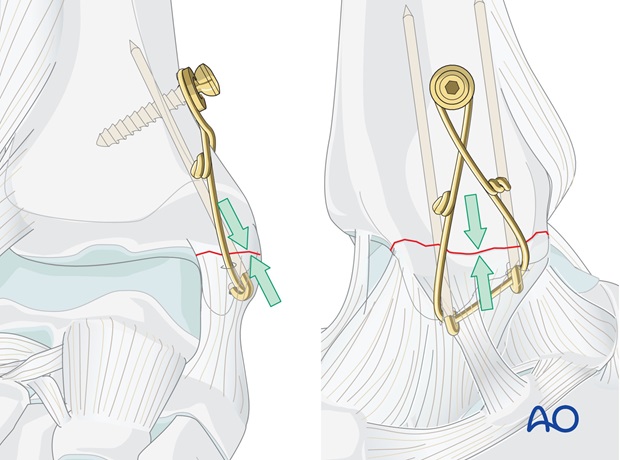
1. Reduction
Preparing the fracture site
Remove any minor bone fragments which are blocking reduction. Do not strip the periosteum more than necessary.
It is important to visualize and inspect the joint, searching for bone and cartilage fragments detached from the medial malleolus or from the talus.
Reduction with small pointed reduction forceps
Reduce the fracture with small pointed reduction forceps.
Do not strip the periosteum more than necessary.
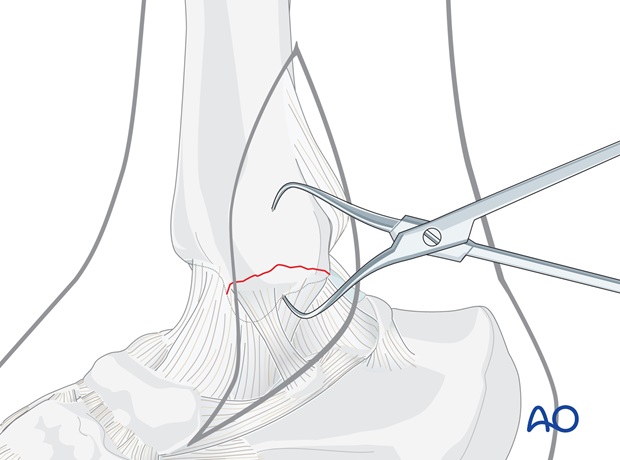
2. Fixation
Insert the posterior K-wire
Using 1.6 mm K-wire, drill the posterior wire as perpendicularly as possible to the fracture plane.
Take special care not to cross the fracture line too close to the joint.
Note
Avoid penetration of the ankle joint, or the lateral tibial cortex.
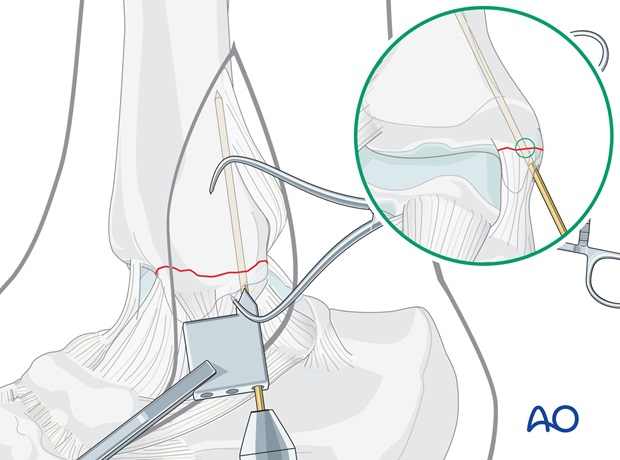
Insert the anterior K-wire
A second 1.6 mm K-wire is inserted into the medial malleolus, parallel to the first wire.
These two K-wires stabilize the fracture against rotation and will be used to anchor the figure-of-eight wire distally.
Check the reduction under image intensification.
Note
Care must be taken to avoid intraarticular positioning of the K-wires.
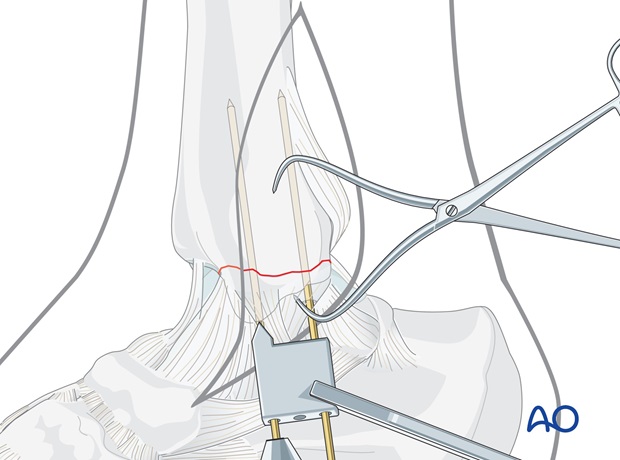
3. Screw insertion
Drill a 2.5 mm hole, with the protection of a drill sleeve, 2-3 cm above the level of the horizontal joint line, aiming the drill bit slightly inferiorly to avoid screw pullout.
Tap the medial cortex with the 3.5 mm tap and protection sleeve.
Insert a unicortical screw, ranging from 20-30 mm in length and fitted with a washer. Leave a space for the wire of 2-3 mm between the bone and the washer.
Note
In osteoporotic bone, this screw must be bicortical.
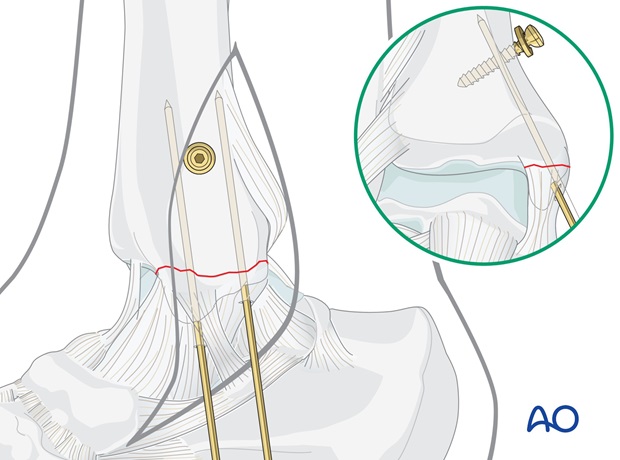
Wire application
Prepare the 0.8 -1.0 mm wire by making a loop at approximately one third along its length.
Pass the shorter segment of the wire close to the bone around the two K-wires.
Pass the longer segment of the wire (bearing the loop) around the screw between bone and washer, forming a figure-of-eight.
Twist the free ends together.
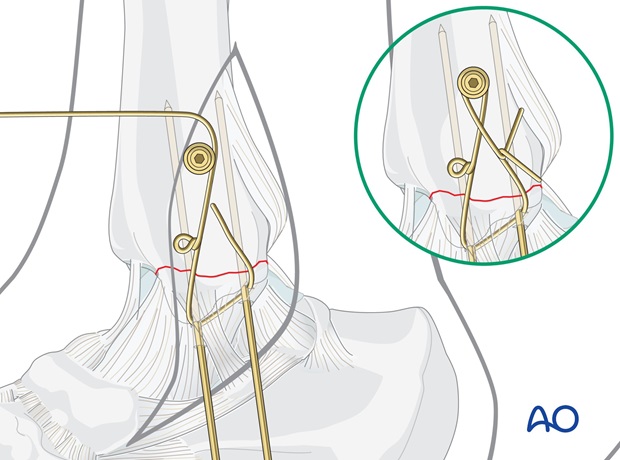
Some surgeons prefer to use two pieces of wire, twisting the ends together to create the figure of eight loop with a twist on each side.
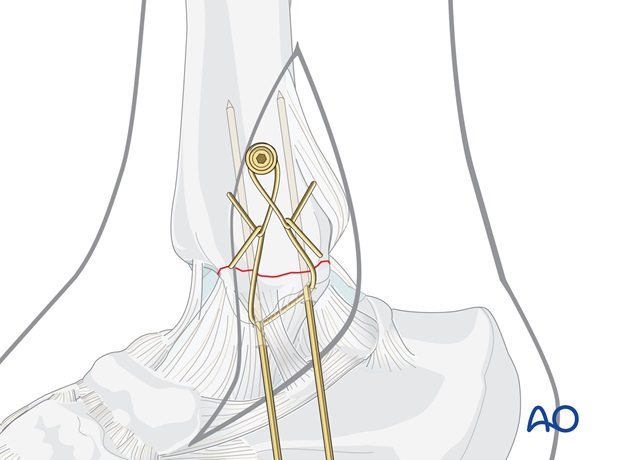
Wire tightening
The wire twist is loosely prepared ensuring that each end of the wire spirals equally, forming a double helix – avoid twisting one wire around the other (straight) wire.
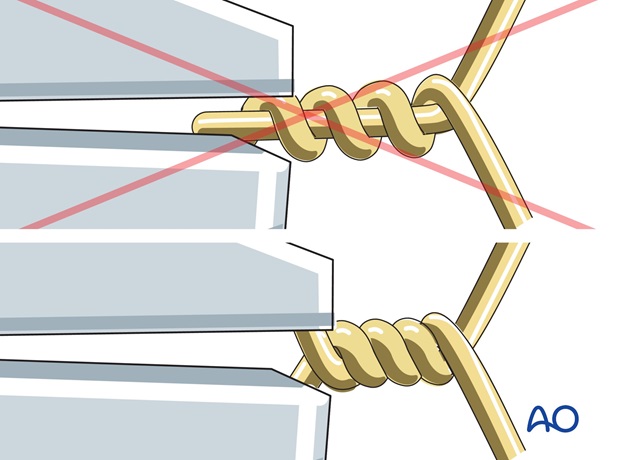
The wire is tensioned by pulling on the twists.
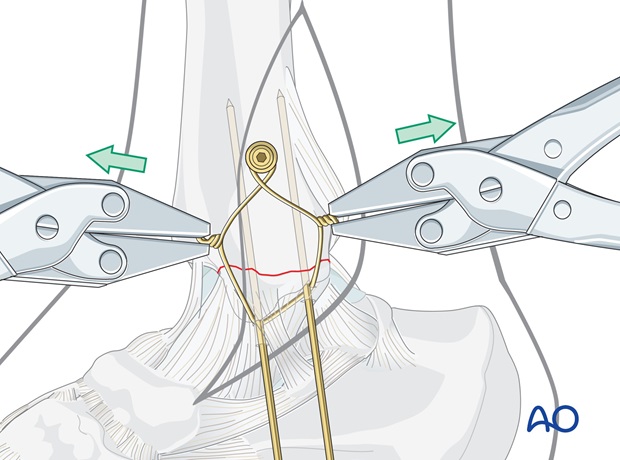
The slack is then taken up by further twisting. Repeat this until the desired tension is achieved. Both loops must be tightened at the same time and in the same direction, to achieve equal tension on both arms of the wire.
Tighten the screw carefully. Trim the twists and turn both ends towards the tibia in order not to irritate the soft tissues later.
Note
In osteopenic bone care must be taken to avoid excessive tensioning.
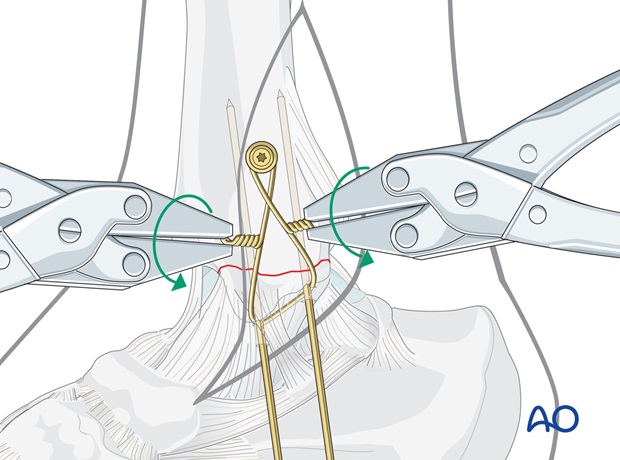
Finishing fixation
Cut the 2 K-wires obliquely, approximately 1 cm from their insertion points and, with the help of a bending iron and forceps, bend through 180 degrees.
The K-wires are then driven home, sinking their curved ends into the bone to prevent backing out and skin injury.
Take final x-rays in both planes to check the results.
